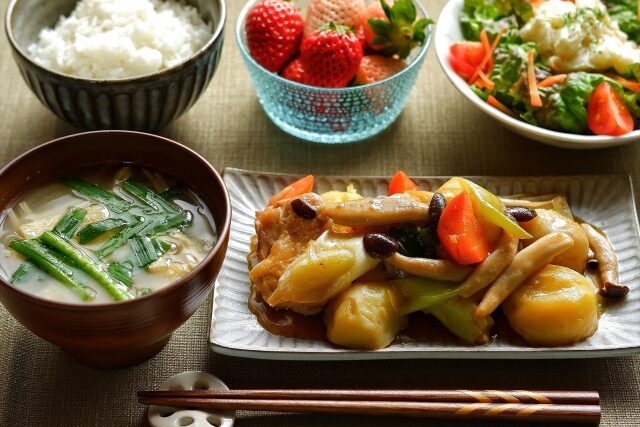जापान में भोजन की दुनिया बेहद विस्तृत है—नई चीज़ें निडर होकर चखिए। पारंपरिक तौर पर यहाँ सोया और मछली प्रोटीन का मुख्य स्रोत रहे, पर आधुनिक समय में पश्चिमी असर से मांस का चलन बहुत बढ़ा है। चूँकि ज़्यादातर लोग नॉन‑वेज खाते हैं, मेन्यू पर veg / non‑veg या vegan का चिन्ह नहीं मिलता। अगर आप पूरी तरह शाकाहारी या वीगन रहना चाहते हैं, तो थोड़ी रणनीति चाहिए—सामग्री पढ़ने या दो‑तीन विनम्र सवाल पूछने की आदत से पता चल जाएगा कि क्या खाना सुरक्षित है। (भारत के हरे‑लाल वेज निशान यहाँ नहीं मिलेंगे।)
English
Japan offers a huge spread of food cultures—please be adventurous and sample widely. Traditionally the diet leaned on soy and fish for protein, but Western influence has brought a big rise in meat dishes. Because most diners here are non‑vegetarian, menus seldom label items as veg / non‑veg or vegan‑friendly. If you want to stay strictly vegetarian or vegan, you’ll need a little strategy: learn to read ingredient lists or ask a few polite questions so you can spot what is—and isn’t—safe to eat. (Those familiar green‑and‑red veg symbols from India don’t exist here.)
जापानी शाकाहारी मूल चीज़ें / Vegetarian‑Friendly Japanese Staples
सोयाबीन सबसे बड़ा सहारा है। जापान में आज भी यही मुख्य प्रोटीन स्रोत है, और सुपरमार्केट सोया‑आधारित चीज़ों से भरे रहते हैं:
- टोफू – बिल्कुल स्टेपल। दिखने में पनीर जैसा, लेकिन उबली सोया‑मिल्क को जमाकर बनता है। ठंडा हियायाको, पैन‑फ्राय, सूप—सब चलता है।
- अबुरा‑आगे – पतली टोफू स्लाइस, डीप‑फ्राइड। सब्ज़ी में डालें, सूप में तैराएँ, चावल या चीज़ भरें, या छोटा पिज़्ज़ा‑बेस बना लें।
- मिसो – एक साल पकी सोया‑पेस्ट; मिसो सूप जापान का ‘दाल’ समझिए—हल्का, आरामदायक, उमामी‑युक्त।
- शोयू (सोया सॉस) – बनाने की विधि मिसो जैसी ही; जापानी स्वाद का सबसे बुनियादी मसाला—एक छींटा डालते ही पकवान “जापानी” बन जाता है।
- नैट्टो – किण्वित सोयाबीन। चिपचिपा है, पर स्वादिष्ट; नैट्टो‑काइनेज़ एंज़ाइम रक्त प्रवाह के लिए अच्छा माना जाता है।
- गन्मोदोकि – टोफू में कटी सब्ज़ियाँ मिलाकर तले हुए गोले। शोरबा खूब सोखते हैं, इसलिए स्ट्यू में बढ़िया लगते हैं।
English
Soybeans are your best friend. They’re still a daily protein source in Japan, and supermarkets overflow with soy‑based foods:
- Tofu – A true staple. It looks like paneer but is set from cooked soy milk. Eat it chilled (hiyayakko) in summer, pan‑fry it, add it to soups—anything goes.
- Abura‑age – Thin tofu slices, deep‑fried until golden. Dice them into veggie stir‑fries, float them in soup, stuff them with rice cakes, or open them up as a mini pizza base.
- Miso – A savoury paste aged from soybeans for a year. Think of miso soup as Japan’s answer to dal: light, comforting, full of umami.
- Shōyu (soy sauce) – Made by a process similar to miso; it’s the single most basic seasoning in Japanese cooking—add a splash and almost anything tastes “Japanese.”
- Nattō – Fermented soybeans. Yes, they’re sticky and stringy, but they’re tasty and loaded with natto‑kinase, an enzyme said to support healthy circulation.
- Ganmodoki – Tofu mixed with vegetables, shaped into patties and fried. They soak up broth beautifully, so drop them into stews.
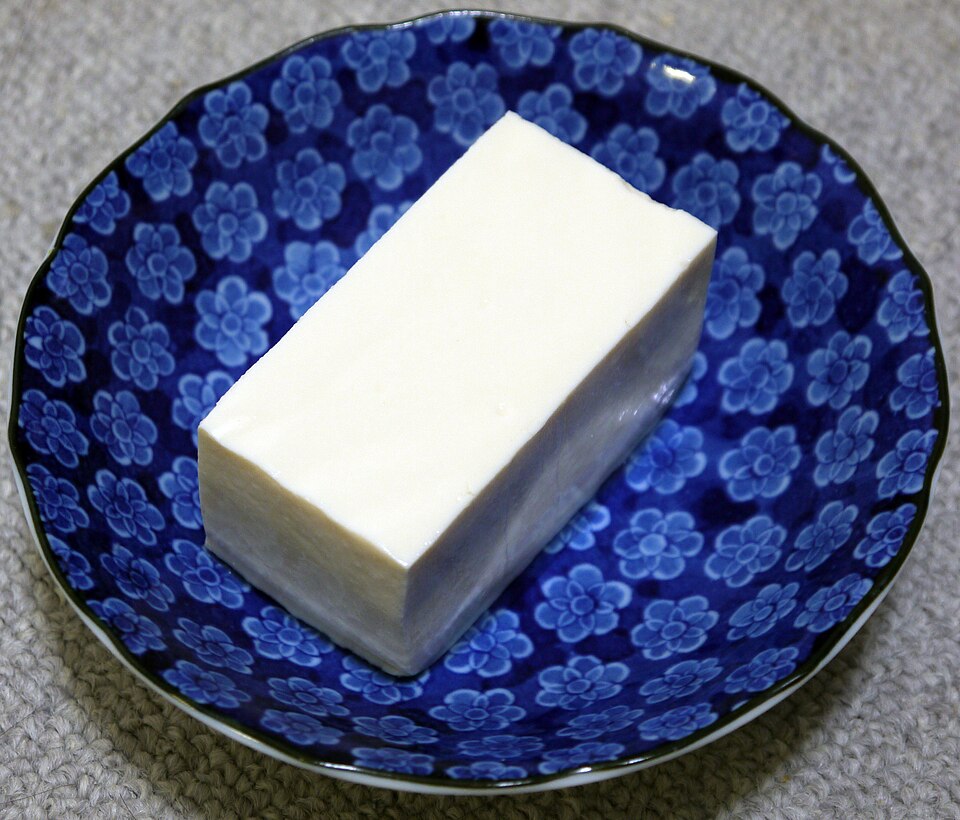
Tofu (source)
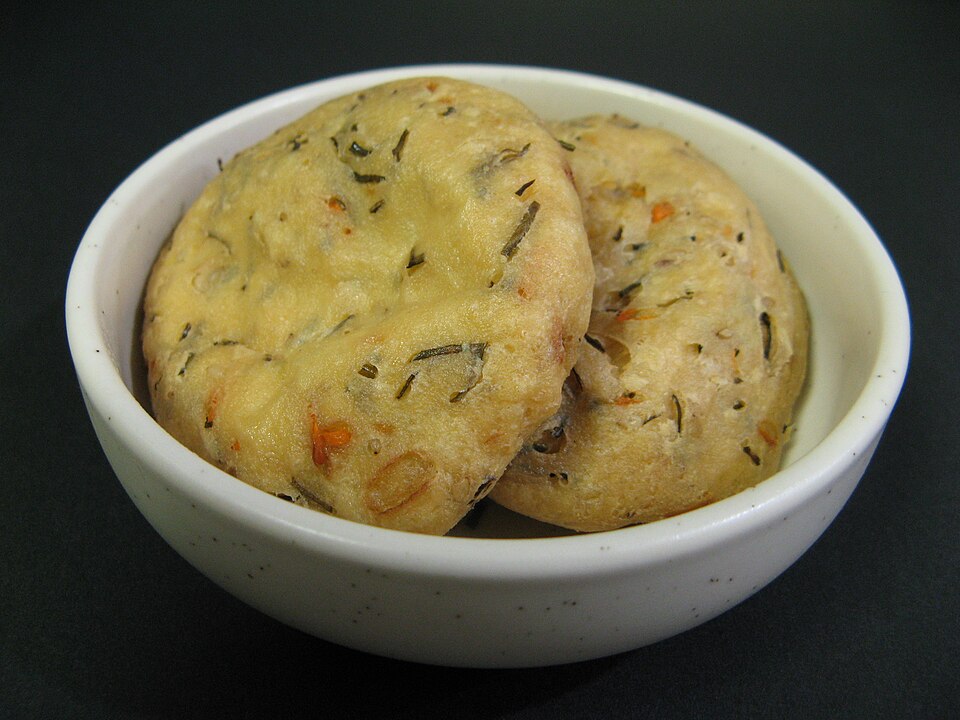
सोया के अलावा, जापानी खाने में खाने योग्य समुद्री शैवाल वाकामे, कोंबु, हिज़िकी आदि खूब होते हैं—इन्हें समुद्र की पालक मानिए; सूप या सलाद में हल्का नमकीन स्वाद और ढेर सारे खनिज मिलाते हैं।
स्वाद के लिए पकवान की नींव होता है उमामी स्टॉक (दाशी), जो कोंबु केल्प या सूखे शिटाके से निकाला जाता है। लंबी उबाल नहीं चाहिए तो दाशी‑मोटो पाउडर ले लीजिए—चुटकी‑भर में शोरबा तैयार।
English
Japan also uses edible seaweeds such as wakame, kombu, and hijiki—think of them as leafy greens from the ocean that give soups and salads a mild salty flavour and an extra boost of minerals.
For flavour, cooks start with umami stock (dashi), extracted from kombu kelp or dried shiitake. If you don’t want to simmer your own, grab instant dashi‑no-moto powder—one spoonful and the broth is done.
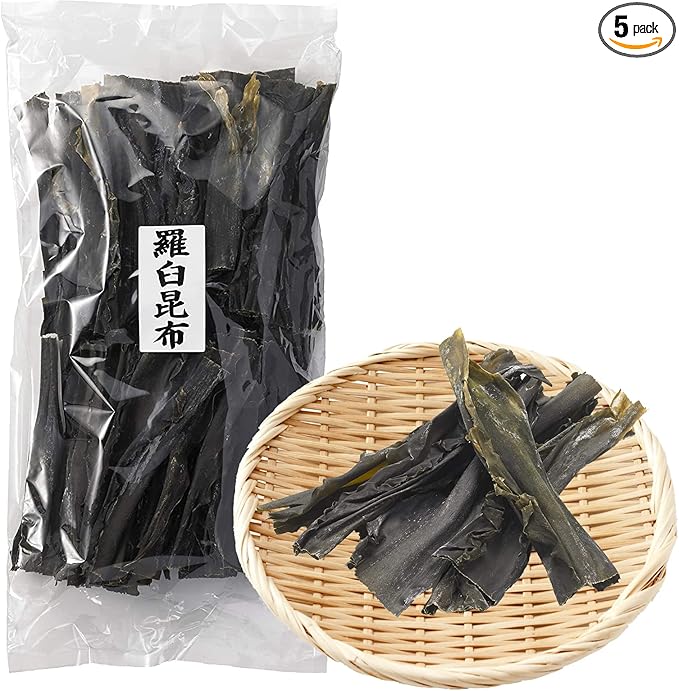

जापानी खाने की थाली कैसी होती है? / What’s on a Japanese Table?
रोज़ का सेट‑अप
आम जापानी थाली होती है भाप में पका चावल, प्रोटीन वाला मुख्य व्यंजन, एक‑दो छोटी सब्ज़ी/साइड डिश, और एक कटोरा मिसो सूप—इसे यूँ समझें: रोटी की जगह चावल है और चारों ओर छोटे‑छोटे स्वाद के कटोरे हैं।
बदलाव ही आदत है
यहाँ माना जाता है कि थाली में कम‑कम मात्रा में कई तरह की चीज़ें होना सबसे सेहतमंद है—मकसद है सारे पोषक तत्व संतुलित रूप से पाना। साथ ही, लोग जल्दी ऊब जाते हैं, इसलिए हर दिन कुछ नया मिलाना भी रिवाज है: नाश्ते में सीरियल, योगर्ट या टोस्ट; दोपहर में चीनी नूडल्स या इतालवी पास्ता; और रात को जापानी चावल के साथ कोई पश्चिमी‑स्टाइल सब्ज़ी या डिश। सुपरमार्केट में दुनिया भर का सामान मिलने से “फ़्यूज़न” खाना यहाँ बिल्कुल आम बात है।
English
The everyday set‑up
A typical home meal is steamed rice, a protein‑rich main dish, one or two small vegetable sides, and a bowl of miso soup—think of rice taking chapati’s place, with little bowls of flavour around it. Because traditional flavour comes from soy sauce, miso, or seaweed stock rather than meat fat, making a vegetarian plate is easy: tofu, vegetables, seaweed, and pickles fill the gaps.
Variety is a habit
The goal is many small portions, many ingredients—good for nutrition. Also, Japanese cooks get bored fast, so they mix in new ideas: breakfast may be cereal, yogurt, or toast, lunch could be Chinese noodles or Italian pasta, and dinner might pair Japanese rice with a Western‑style main dish. Supermarkets stock ingredients from everywhere, so “fusion” is normal.
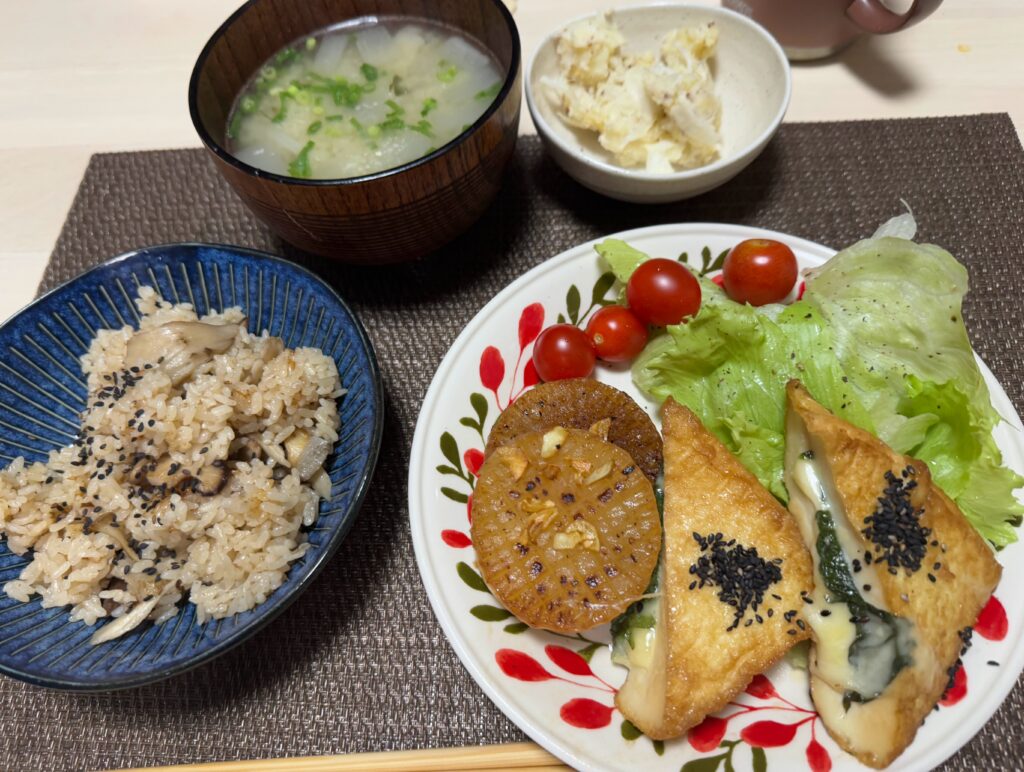
Seasoned rice, simmered tofu with cheese, daikon steak, fresh salad, miso soup, and potato salad
चावल (शॉर्ट‑ग्रेन)
भारतीय लंबे दाने वाले चावल की तुलना में जापानी चावल छोटा और हल्का चिपचिपा होता है। पकाना आसान है: धोएँ, पानी डालें, राइस‑कुकर में एक बटन दबाएँ और बस। चावल का स्वाद हल्का होता है, इसलिए इसे साइड डिश के साथ मिलाकर मुँह में लेना बेहतर संतुलन देता है।
English
Rice (short‑grain)
Compared with long‑grain Indian rice, Japanese rice is shorter and pleasantly sticky. Cooking is fool‑proof: rinse, add water, press one button on the rice cooker, and wait. The rice itself is mild; you scoop a little together with a side dish so the flavours balance in each bite.


अन्य मुख्य कार्ब
- उदोन (मोटे गेंहूँ के नूडल)
- सोबा (बकव्हीट के नूडल)
- रामेन (शोरबे वाले नूडल), याकिसोबा (फ्राय किए)
- कई तरह के पास्ता—स्पैगेटी, मैकरोनी, लसाग्ना, फुज़िल्ली
- तरह‑तरह की ब्रेड और रोल
- ओकोनोमियाकी –गेहूँ के घोल में पत्ता गोभी वग़ैरह मिलाकर तवे पर बना नमकीन पैनकेक
English
Other staple carbs
- Udon (thick white wheat noodles)
- Soba (buckwheat noodles)
- Ramen (wheat noodles in broth), Yakisoba (stir‑fried)
- Many shapes of pasta—spaghetti, macaroni, lasagna, fusilli
- A wide range of breads and rolls
- Okonomiyaki – a savoury “pancake” of wheat batter mixed with cabbage and topped with sauce, mayo and bonito flakes
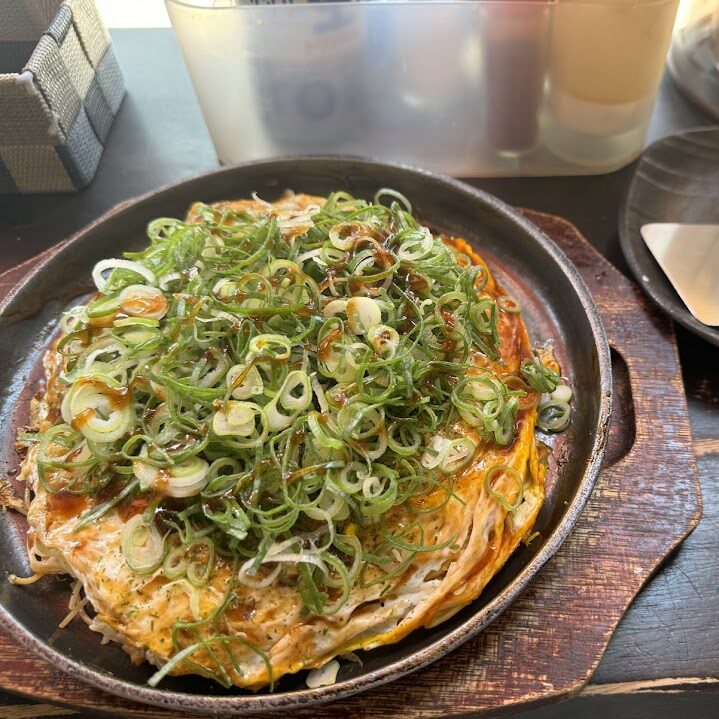

टोक्यो में बाहर खाना / Eating Out in Tokyo
टोक्यो रेस्टोरेंट का खेल‑मैदान है—दुनिया में सबसे ज़्यादा Michelin स्टार, साथ ही कम दाम पर भी लज़ीज़ खाना। भूख लगी? बस बाहर निकलिए और मज़े लीजिए!
केवल शाकाहारी रेस्टोरेंट ढूँढना हो तो Happy Cow जैसी साइट देखें। आम रेस्टोरेंट में बैठते ही मुस्कुरा कर पूछें: “क्या आपके पास वेजिटेरियन मेन्यू है?” अगर होगा, स्टाफ़ तुरंत बता देगा कि क्या सुरक्षित है।
महँगे या बहुत लोकप्रिय रेस्टोरेंट तेजी से भर जाते हैं, इसलिए पहले से बुक करें—छुट्टी का घंटा लाइन में क्यों गँवाएँ!
English
Tokyo is a restaurant playground—home to more Michelin stars than any other city, yet packed with tasty budget spots, too. Hungry? Step outside and start exploring!
If you want an all‑vegetarian place, try a site like Happy Cow to locate one. In a regular restaurant, just smile and ask, “Do you have a vegetarian menu?” If they do, the staff will happily point out the safe dishes.
High‑end or wildly popular spots fill up fast, so booking ahead is smart—far better than losing an hour of holiday in a queue.

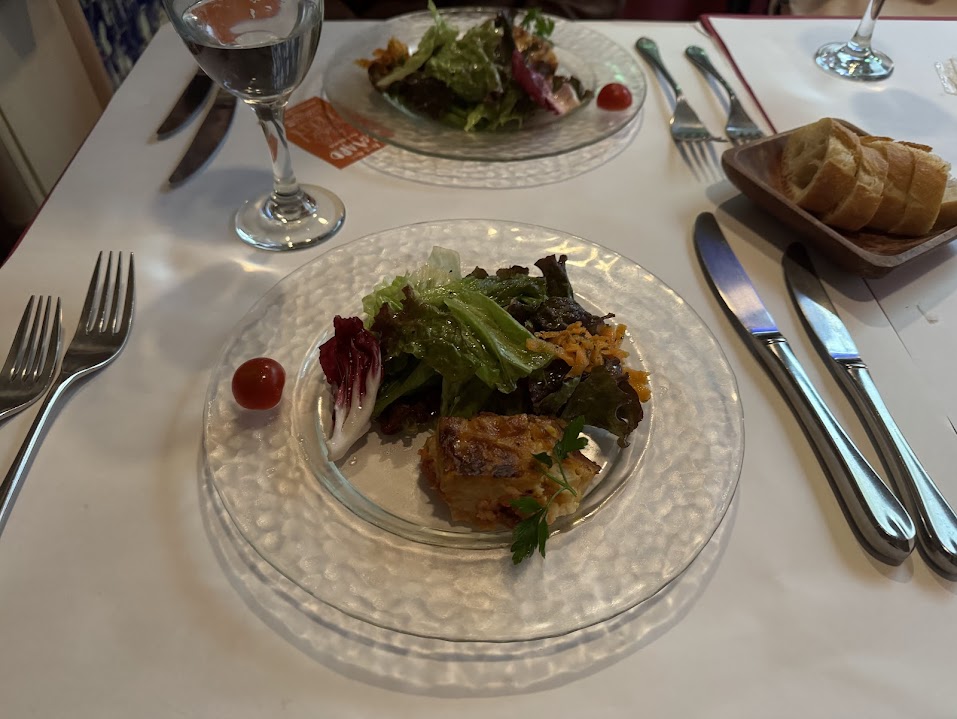
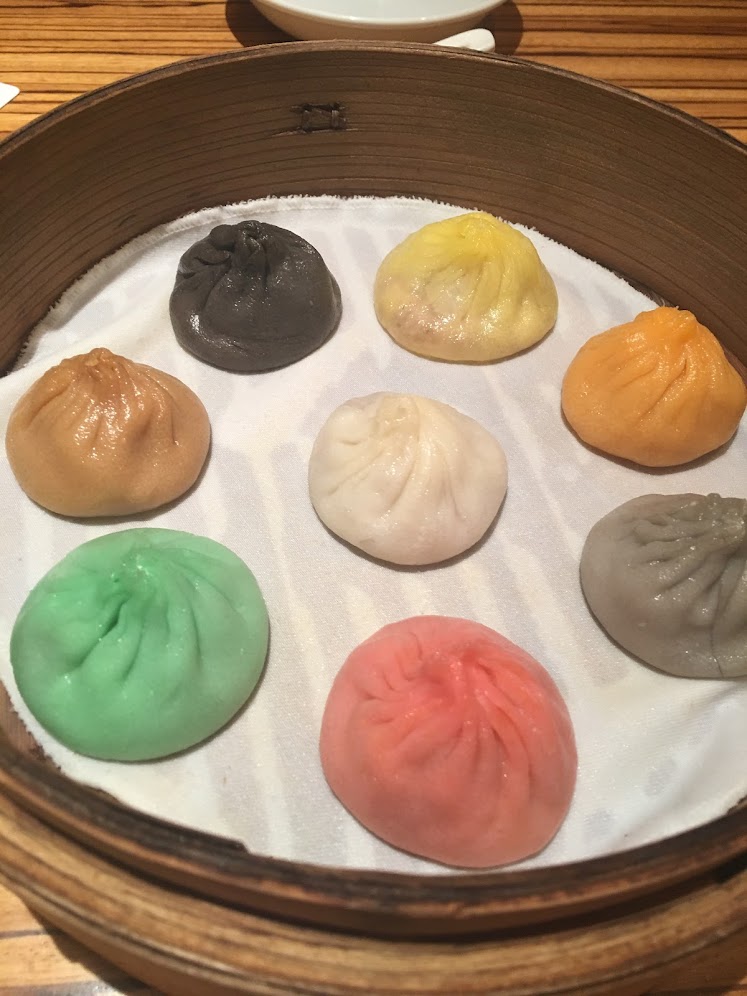

जापान में खाने का यह झटपट गाइड यहीं खतम। भारत से तरीका अलग है—यही तो मज़ा है—and सख़्त शाकाहारी भी यहाँ खूब बढ़िया खा सकते हैं। कोई उलझन हो तो हमें मेसेज करें; हम अनुवाद कर देंगे या रेस्टोरेंट को कॉल कर देंगे।
English
That’s your lightning guide to eating in Japan. Sure, things work differently from India, but that’s half the fun, and even strict vegetarians can eat very well here. If anything feels confusing, ping us—we’ll translate or phone the restaurant for you.
